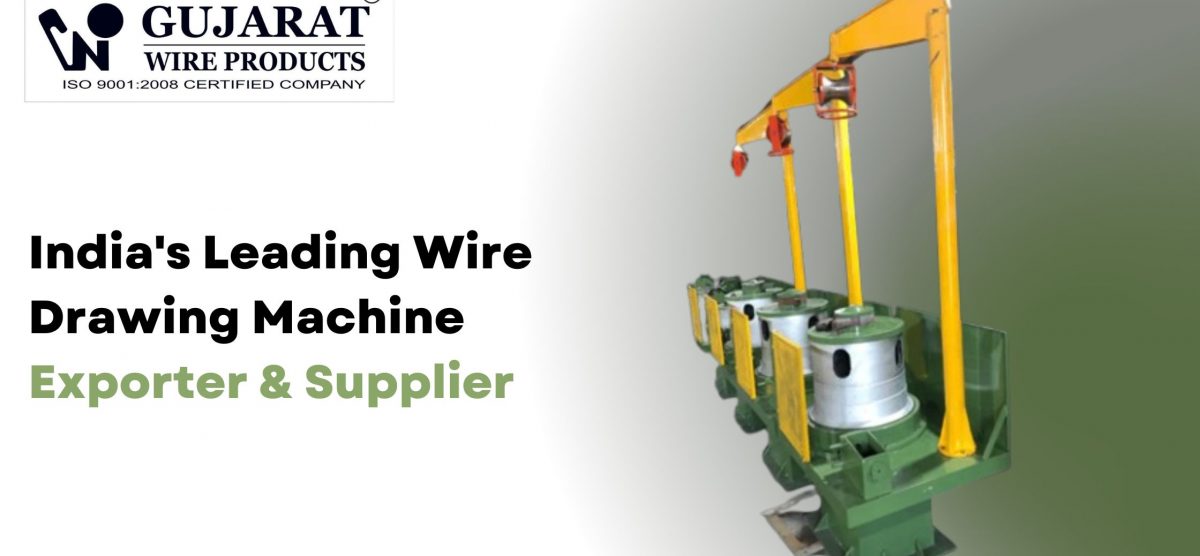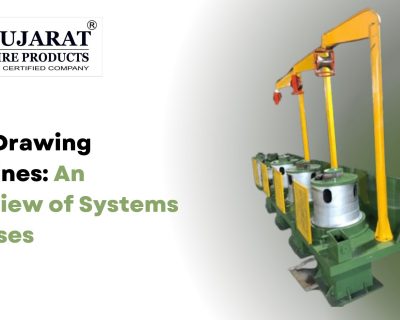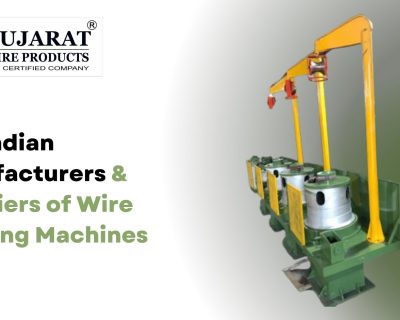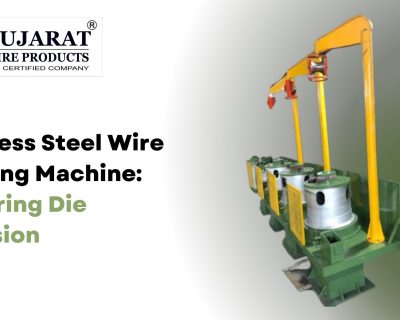Blog

India’s Leading Wire Drawing Machine Exporter & Supplier | Gujarat Wire Products
Introduction
Every wire you see in construction steel bars, automotive harnesses, or power transmission cables starts as thick rod stock. The transformation happens inside wire drawing machines—equipment that pulls metal through progressively smaller dies until the desired diameter and mechanical properties emerge. But here’s what most buyers miss: not all drawing machines handle India’s variable power supply, inconsistent raw material quality, or extended production shifts. The Indian wire drawing machine market reached $156 million in 2025, yet operational failures cost manufacturers ₹40,000+ per day in lost output. The difference between average equipment and production-ready systems determines whether operations scale profitably or stall under warranty claims and downtime. This guide explains what separates functional machines from export-grade systems, the technical features that matter for Indian conditions, application-specific requirements, and maintenance protocols that extend equipment life beyond ten years.
Wire Drawing Machine Types
Straight Line Drawing Machines
These machines process wire in a linear path through multiple dies arranged sequentially. Straight line configurations suit high-volume operations producing construction wire, fencing mesh, and fastener stock. Drawing speeds reach 800-1200 meters per minute depending on wire diameter and material hardness.
Single-pass systems reduce diameter by 15-25% per die. Multi-pass machines with 6-12 dies achieve final diameters from 8mm rod down to 0.8mm wire without intermediate annealing.
Pulley Type Systems
Pulley (also called tower) machines use rotating capstans to pull wire through dies positioned at different heights. This design allows flexible speed control and tension adjustment between stages. It handles stainless steel, high-carbon alloys, and materials requiring careful work hardening control.
Mid-sized manufacturers prefer pulley systems for batch production where die changes happen frequently to accommodate varying customer specifications.
Water Tank Drawing Machines
Water tank models immerse the drawing process in coolant, controlling temperature rise during deformation. This prevents grain structure damage in copper, aluminum, and soft alloys. Fine wire production for electronics, telecommunications cables, and precision springs depends on water tank machines to maintain surface finish and conductivity.
These systems achieve diameters as small as 0.15mm while holding tolerances within ±0.01mm—critical for connector pins and microelectronics applications.
Core Technical Features
Frequency Conversion Technology
Modern machines use variable frequency drives (VFDs) instead of fixed-speed motors. This innovation cuts energy consumption by 20-30% compared to older DC motor systems. Industry data shows wire drawing consumes 30-868 kWh per ton depending on equipment age and wire type, with an average of 308 kWh/ton.
VFDs synchronize motor speed with material flow, preventing wire breakage from sudden tension changes. They also reduce starting current by 40%, which matters in areas with unstable grid supply.
Dual Frequency Conversion Systems
Advanced setups use independent frequency-controlled motors for main pulling and take-up operations. This configuration maintains precise tension through closed-loop PID control with feedback from tension pendulums. Double frequency machines deliver 5-7 year bearing life versus 2-3 years in single-motor designs, drastically cutting maintenance costs.
Automated Tension Control
Tension must remain constant within 2% tolerance across all drawing stages. Variations cause diameter inconsistencies and surface defects. PLC-controlled tension systems adjust motor torque in real-time based on sensor feedback, compensating for die wear and material hardness variations.
Applications Across Industries
Wire drawing machines serve distinct sector needs. Construction consumes the highest volume—TMT bars, binding wire, and mesh for concrete reinforcement. Automotive production requires precise harness wire, brake cables, and spring steel. Electrical applications demand high-conductivity copper and aluminum with minimal surface oxidation. Fastener manufacturing uses cold-heading quality wire with specific grain structures for thread rolling.
Each application tolerates different defect levels. Power cables allow 0.5% surface imperfections. Medical guidewires require zero-defect production with full traceability.
Why Indian Conditions Demand Robust Engineering?
Most imported machines fail within 18 months in India due to three factors: voltage fluctuations exceeding ±15%, ambient temperatures reaching 48°C in summer, and raw material carbon content varying between batches. Equipment designed for controlled European environments cannot handle these variables.
Production-ready machines for Indian operations include automatic voltage regulators, thermal overload protection, and adaptive die positioning that compensates for hardness inconsistencies. Dust-proof enclosures prevent bearing contamination in open factory environments common across smaller cities.
Maintenance That Extends Equipment Life
Daily lubrication checks prevent 70% of mechanical failures. Weekly die inspections catch wear patterns before diameter drift occurs. Monthly tension calibration maintains product consistency. Replacing cutting dies every 500,000 cycles preserves surface finish.
Operators need structured training. Untrained personnel cause wire breakage rates above 8%, while properly trained teams maintain breakage under 2%. The cost difference exceeds ₹2 lakh annually for mid-sized operations.
Market Growth and Opportunity
India’s manufacturing push, infrastructure expansion, and automotive electrification are driving wire demand across all grades. Automation trends favor machines with digital controls, remote monitoring, and predictive maintenance capabilities. Manufacturers investing in frequency-controlled, multi-wire drawing lines capture higher margins by serving quality-sensitive export markets.
The constraint isn’t demand—it’s finding equipment built for Indian operating realities that runs 16-hour shifts without supervision.
FAQs
Q: Can wire drawing machines handle both ferrous and non-ferrous materials?
A: Yes, with appropriate die materials. Tungsten carbide dies process steel and stainless alloys. Diamond dies handle copper and aluminum. Quick die-change systems allow material switching within 20 minutes.
Q: What determines energy consumption per ton?
A: Wire diameter reduction percentage, material hardness, drawing speed, and motor efficiency. VFD-equipped machines consume 30-40% less energy than older DC motor systems for identical output.
Q: How do double frequency systems improve production?
A: Independent motor control maintains consistent tension across speed changes, reducing wire breakage by 60%. This cuts material waste and prevents production stoppages from rethreading operations.
Q: What maintenance interval ensures ten-year operational life?
A: Daily lubrication, weekly inspections, monthly calibrations, and die replacement every 500,000 cycles. Bearing replacement at 50,000 operating hours prevents catastrophic failures.
Conclusion
Wire drawing success depends on equipment engineered for real manufacturing conditions—not laboratory specifications. Machines that combine frequency conversion, robust construction, and adaptive controls determine who scales and who struggles.
Gujarat Wire Products delivers wire drawing systems built for India’s toughest production environments. Our machines handle variable inputs, run extended shifts, and maintain precision that meets international export standards. Ready to eliminate downtime and scale your wire production? Visitgujaratwireproducts.com or contact our engineering team for a site assessment and customized solution design.




